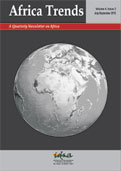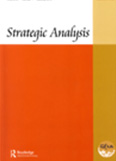Smear Campaign against N-India
It is unfortunate that ace journalists like Adrian Levy and R Jeffrey Smith had to struggle with facts while talking about India's nuclear security. The authors must know that while criticising nuclear India, they are doing more harm than good to the cause of nuclear security
The fourth and presumably final Nuclear Security Summit is going to take place in the US from March 31 to April 1, 2016. Expectedly, writings and views are being articulated to shape the agenda of the summit, much like it had been done in previous years. In 2014, for example, Washington, DC-based think-tank Nuclear Threat Initiative published its Nuclear Materials Security Index. This was the second edition of the controversial index and it was ignored, by and large, by national Governments because of its flawed methodology.
This year, it seems, the Washington, DC-based nonprofit digital news organisation, Center for Public Integrity, has taken the lead and been publishing articles on the subject. In mid-December, the organisation published a series of four articles on different aspects of nuclear India, authored by noted journalist Adrian Levy. One of the articles talks about India’s nuclear security. This article, ‘India’s nuclear explosive materials are vulnerable to theft, US officials and experts say’ is co-authored by The Washington Post reporter R Jeffrey Smith. Unfortunately, even reputed writers such as Mr Levy and Mr Smith have struggled with facts in the article.
Like other articles in the series, this one too has an agenda and, thus, a thesis that there is nothing good with nuclear India. The agenda seems to be that India should listen to what the Americans are saying directly or through foreign-funded non-government organisations. The facts and reports used to thrash nuclear India are old, and have been systematically and scientifically countered. Besides, the authors have exaggerated some incidents to prove that all is wrong with the Indian system.
For example, one stray shooting incident that involved a Central Industrial Security Force personnel made the authors conclude that the entire CISF is not capable of handling the physical security of nuclear installations. The authors should know that there are organisations and groups other than the CISF that manage the security of Indian nuclear installations even though it is true that the CISF provides physical protection to different layers of the many key nuclear installations.
The article quotes that CISF personnel are imparted special training before deployment. It needs to be added that the deployment of CISF to different layers or stages is done on the basis of threat perception. The Indian nuclear establishment and regulatory bodies like the Atomic Energy Regulatory Board have rules, codes, guidelines and manuals for physical protection of nuclear installations. These documents are regularly updated. The guiding documents take into consideration best practices in the world. The personnel providing physical security also receive training in foreign countries under international cooperation. Many security personnel have been trained in the US.
Besides, CISF officials in charge of physical protection maintain that India not only takes into account best practices from around the world, but also evolves and innovates its own mechanisms. Quite possibly, some of the redundant and outdated practices are discarded. Even such a change takes place after proper deliberations.
Likewise, the CISF is expected to buy the weapon required for physical or other protection, not the costly toys (weapons) sold by foreign countries.
Similarly, the authors give an account of an American official who was checked quickly but not thoroughly at one of the nuclear sites in India. This sounds ridiculous. There could be two possibilities. First, the Indian system is efficient. Second, Indian agencies may have completed all the necessary checks on the concerned official.
Foreign visitors come occasionally to nuclear sites and the entire system knows about them. What may have happened is that only required checks would have been performed on the American official who was, in any way, sent by the US Government to visit the Bhabha Atomic Research Center. Do the authors expect the Indian officials to behave as foolishly as the American security officials generally do at their immigration counters or elsewhere?
The authors also record the ‘surprise’ of US and Indian officials regarding poor security of transportation of nuclear materials. This entire argument is based on ignorance. The Atomic Energy Regulatory Board has made public, the detailed guidelines for transportation of nuclear materials. The route of transportation is confidential, so is the identity of the vehicle. It is to go under protection. Depending on the route, the security forces of the concerned State Government(s) are contacted. The security agency responsible for transportation may modify the planned route, but it has to coordinate with relevant security agencies.
The article also provides “a series of documented nuclear security lapses”. These documented lapses are wide-ranging from theft of uranium to poisoning of water. On all of these so-called lapses, the AERB and the Department of Atomic Energy have already filed their replies. Most of the listed lapses turned out to be hoax calls.
The police and journalists reporting the incidents did not have instrument to judge whether the material claimed as uranium was really uranium and of what type. Only after examination of the competent authorities, materials were properly recognised. The authors either did not take the trouble to cross check the claims or were committed to establishing something without taking all the factors into account.
For years, particularly after the 2010 Nuclear Security Summit, Western countries have been pushing for one particular centre. India is also setting up its own centre of excellence: In 2010, in Washington, the then Prime Minister announced the Global Centre for Nuclear Energy Partnership to perform the same task for which the Western countries were pushing that particular organisation.
Some Western Governments and non-profits tried to demean the Indian centre and kept promoting that particular organisation. The Center for Public Integrity, in its article, did the same thing: It created curiosity for persons like us and anxiety in the Indian nuclear establishment.
Actually, this is nothing but an intimidatory tactic to procure more information on the Indian nuclear programme in general and its weapons programme in particular. Some Western Governments have been both discreet and blunt about it. The authors and Western Governments need to know that their approach is doing more harm than good to the cause of nuclear security in the long-run.
This article was originally published in The Pioneer.
- Published: 31 December, 2015















